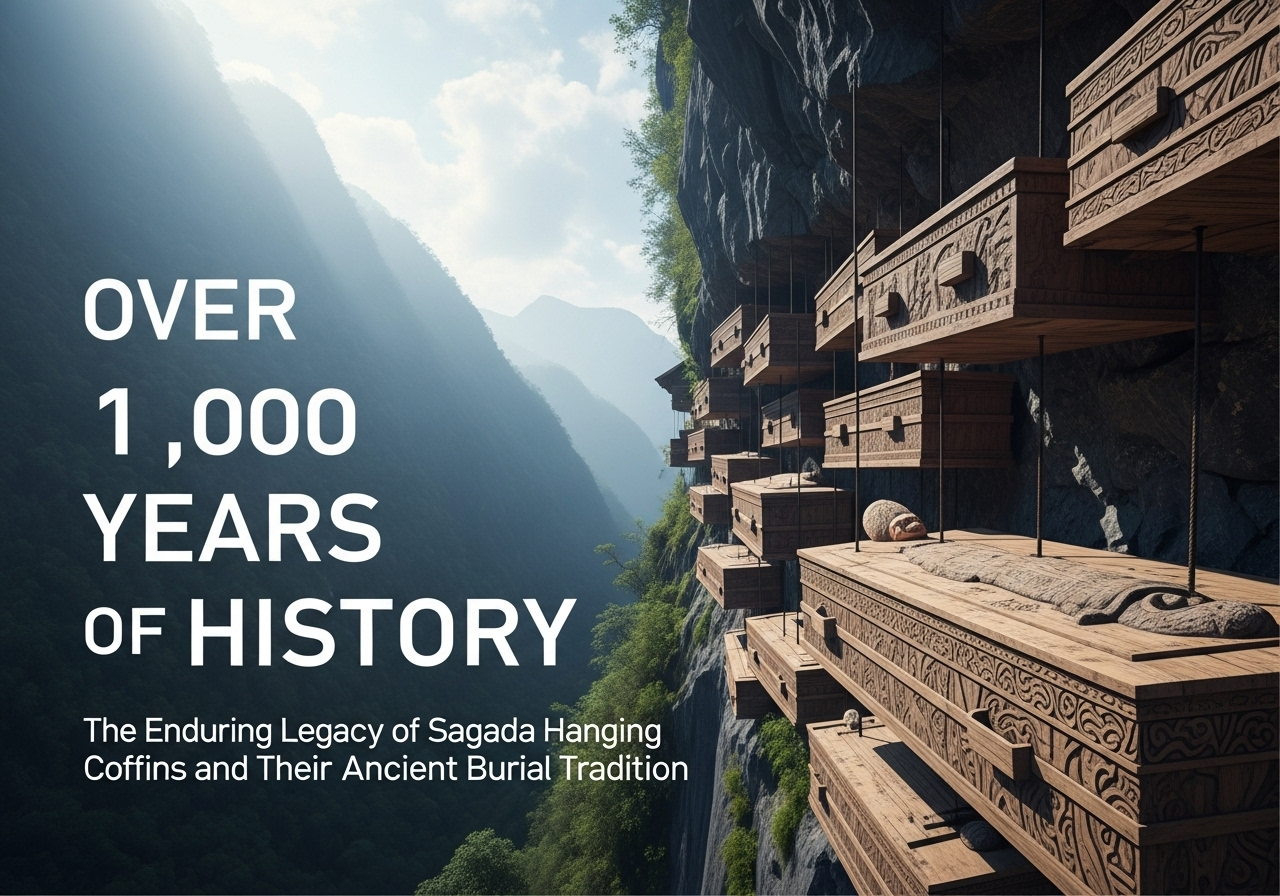The Sagada hanging coffins are one of the Philippines’ most unique and striking cultural treasures. Nestled high in the mountainous province of Mountain Province in Northern Luzon, the small town of Sagada holds an ancient tradition that fascinates both locals and travelers from around the world. Unlike the common practice of burying the dead underground, the Igorot and Kankanaey peoples of Sagada have, for centuries, hung their deceased ancestors’ coffins on steep cliff faces or inside natural caves.
This practice is more than just a burial method; it is a rich cultural expression blending deep spiritual beliefs, social customs, and practical wisdom shaped by the harsh mountainous environment. This article will take you through 7 fascinating facts about this enduring tradition, from its ancient origins to the challenges it faces today.
Key Proposed Tariff Types
- Over 2,000 years old: The tradition stretches back millennia through oral history.
- Personal coffin carving: Elders often carve their own coffins before death.
- Deeng ritual: Mourners seek blessings by touching the deceased during funerals.
- Social status reflected in height: Coffin placement on cliffs honors community leaders.
- Practical reasons: Elevation preserves bodies, protects remains, and conserves land.
- Global parallels: Similar practices exist in China and Indonesia.
- Modern challenges: Declining practice, environmental risks, and tourism require active preservation.
A Tradition with Roots That Stretch Back Over 2,000 Years
One of the most remarkable things about the Sagada hanging coffins is their long history. Oral traditions among the Igorot people claim this burial method has been practiced for more than two millennia. While there is no direct archaeological evidence to confirm coffins that old have survived to this day, the story itself reflects the deep cultural memory and identity the community holds.
This ancient practice predates even Spanish colonization in the 16th century. For centuries, the remote location of Sagada in the Cordillera mountain range has sheltered this custom from external influences that have transformed much of the Philippines. The village’s geographical isolation provided a natural protection, enabling the Igorot burial tradition to flourish largely uninterrupted.
The significance of this history lies not only in the age of the practice but also in what it represents: a continuous link through time between the living and their ancestors. This long-standing connection helps strengthen cultural identity and fosters respect for traditions that many communities have lost.
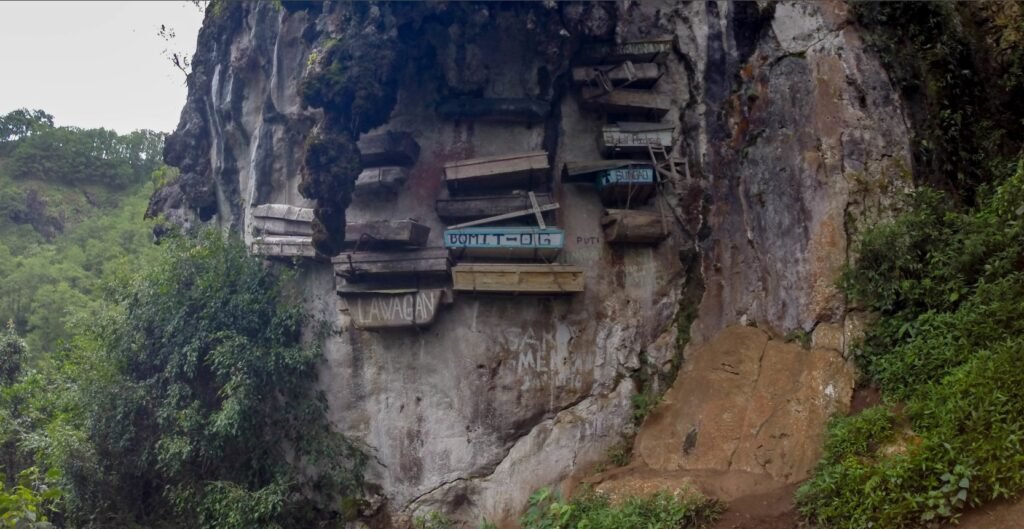
The Personal Journey: Crafting Coffins and Preparing the Body
A unique aspect of the Sagada hanging coffins is how the coffins themselves are crafted and how the body is prepared for burial. In the Igorot burial tradition, elderly individuals often carve their own coffins from durable hardwood before they die. Woods like narra or ipil are chosen for their strength, ensuring the coffin can endure the elements for decades or even centuries.
This act of coffin carving is a conscious preparation for death. It gives the person a chance to participate in their own journey, acknowledging mortality with dignity and readiness. In cases where the person cannot carve the coffin themselves, close family members, often sons, take over this responsibility.
The body is placed inside the coffin in a fetal position. This posture is symbolic—it represents a “return to the womb,” reflecting a belief in the cyclical nature of life and death. This cyclical worldview sees death not as an end but as part of a continuous loop of existence.
Before burial, the deceased undergoes a special process. The body is seated in a “death chair,” secured with vines and leaves, then covered with a blanket. For several days, relatives perform a smoking ritual, known as “deeng,” where the body is exposed to smoke to prevent decay and mask odors. This method serves as a form of preservation, similar to mummification.
This meticulous preparation illustrates how the Sagada community honors their dead, combining practical body preservation with spiritual symbolism and respect.
The “Deeng” Ritual: A Living Link Between Life and Death
One of the most striking customs associated with the Hanging coffins of Philippines is the “deeng” ritual, performed during the funeral procession. The body, wrapped in blankets and secured with rattan leaves, is carried to the burial site on the cliffs or caves. During this procession, mourners attempt to touch or carry the body, believing that coming into contact with the juice or “deeng” from the corpse brings good luck, success, and even transfers the skills or talents of the deceased. ancient-origins
This ritual reflects a unique spiritual understanding where the dead continue to influence the living, not merely as memories but as active participants who protect and empower their descendants. It reveals a belief in a close, reciprocal relationship between the living community and their ancestors.
Such a custom is rare worldwide and highlights the rich and complex worldview of the Igorot and Kankanaey peoples.
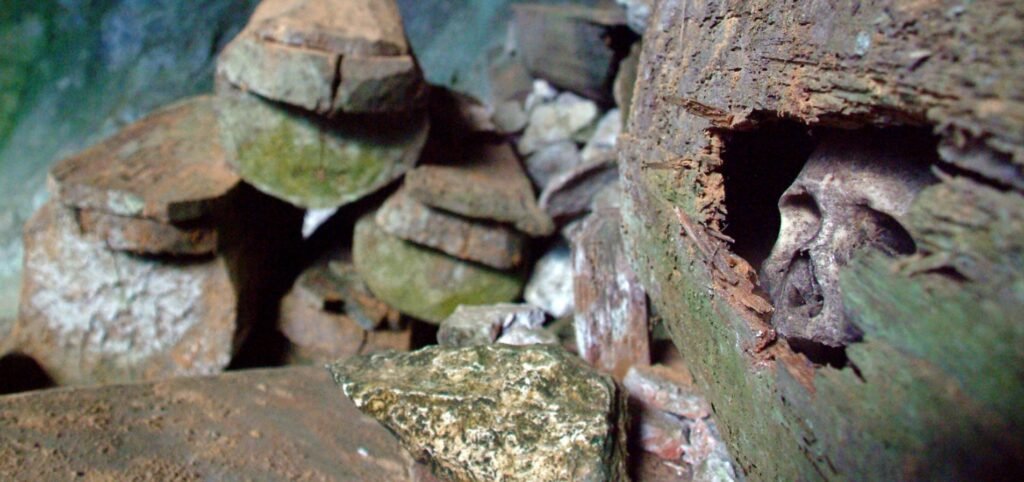
Social Status and Coffin Placement: Height as Honor
The placement of coffins in Sagada is not random; it is deeply tied to social structure and respect. Only certain individuals are eligible for the hanging coffin burial:
- Must be full-blooded Igorot or Kankanaey
- Must have reached elder status, usually being a grandparent
- Must have been married
- Must have died from natural causes
These criteria highlight that the practice is an honor reserved for respected community members, particularly elders and leaders.
The coffin’s height on the cliff symbolizes the deceased’s social standing. The higher the coffin is hung, the greater the respect accorded to that person. This elevates the individual literally and figuratively, reflecting their importance in life and continuing honor after death.
This stratification reinforces community values and social order, intertwining spiritual beliefs with tangible social recognition.
Practical Wisdom Behind Hanging coffins of Philippines
While the spiritual and social aspects are profound, practical reasons also influenced this burial practice. The environment and lifestyle of the Igorot people shaped the innovation of hanging coffins:

Enjoy playing the Wordle game, where you can challenge your mind and language skills by trying to guess the hidden word within a limited number of attempts. Each guess provides you with clues about the correctness and position of the letters, adding excitement and suspense to every round.
Body Preservation
Sagada’s mountainous environment is often wet, with soil conditions that can cause rapid decomposition of buried bodies. Hanging coffins keep the dead elevated, away from moisture and soil, helping preserve the remains longer.
Protection from Animals and Headhunters
Ground burial left bodies vulnerable to scavengers like wild animals. Historically, the region also experienced tribal conflicts and headhunting. Hanging coffins of Philippines provided a safe resting place, protecting remains from desecration.
Land Use Efficiency
Agricultural land in Sagada is scarce due to mountainous terrain. Burying the dead underground would take up valuable farmland needed for crops. Elevating coffins preserved precious arable land for sustaining the community.
This blending of spiritual meaning with practical needs shows the adaptability and resourcefulness of the Igorot people.
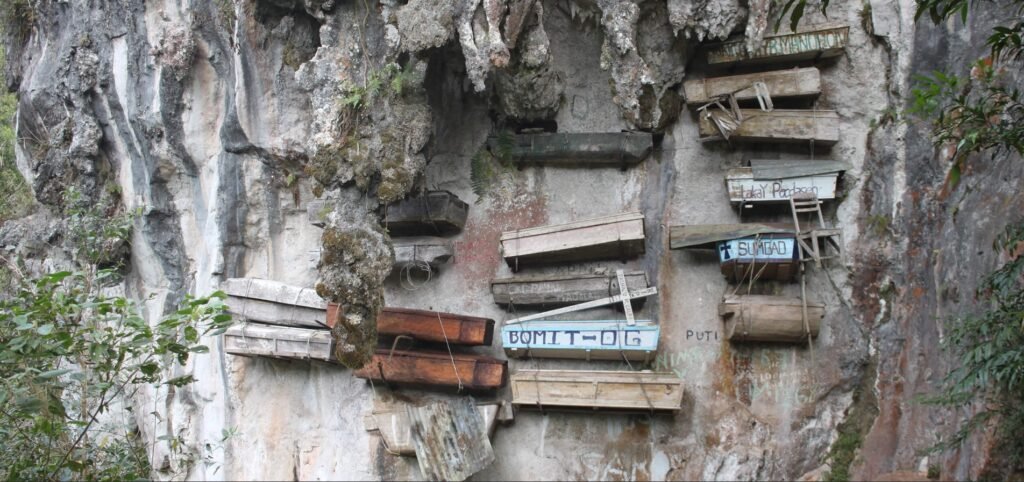
Hanging Coffins Beyond the Philippines: Cultural Parallels
The Sagada tradition is not unique in the world. Similar customs exist elsewhere, showing fascinating cultural parallels:
- China: The now-extinct Bo and Guyue tribes practiced hanging coffins, with some dating back to the Zhou Dynasty (1027-777 BC). The Bo believed high places were sacred and sought peace in the afterlife.
- Indonesia: The Torajan people of Sulawesi use hanging coffins called “liang tokek.” They place tau-tau, wooden effigies of the dead, near the coffins to ward off grave robbers.
These similarities raise interesting questions: Did these cultures influence each other, or did they independently develop similar practices based on shared human concerns like honoring ancestors, protecting remains, and utilizing difficult terrain?
Regardless, they reveal how humans creatively honor their dead in ways shaped by environment, spirituality, and social structures.
Modern-Day Challenges and Preservation Efforts
Despite its rich heritage, the Sagada hanging coffins face significant challenges in today’s world:
Declining Practice
Modern influences, especially the spread of Christianity, have changed burial preferences. Many now choose conventional cemetery burials, which allow for easier visits during Christian holidays like All Saints’ Day. The last traditional hanging coffin burial was in 2010, indicating the practice is fading.
Environmental Decay
Exposure to weather causes gradual deterioration of wooden coffins. Natural events like landslides also threaten the fragile cliffside sites. These environmental pressures risk losing irreplaceable cultural artifacts.
Tourism Impact
Sagada’s hanging coffins attract many tourists, generating income but also introducing risks of disrespect and environmental damage. Managing tourism respectfully is critical.
Community-Led Preservation
Local authorities have implemented regulations to protect the site and culture:
- Mandatory registration and environmental fees for visitors
- Requirement to hire accredited local guides
- Rules forbidding touching coffins or making loud noises
- Allocation of fees towards conservation projects
This community-based approach balances tourism benefits with cultural integrity, showing how indigenous knowledge and modern governance can work together.
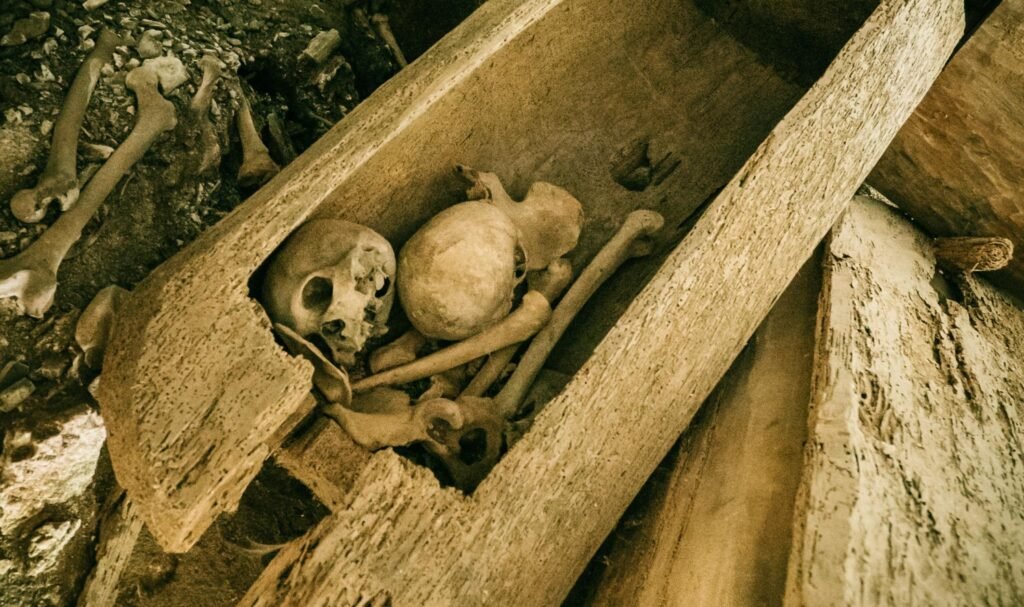
Conclusion: A Living Heritage Facing the Future
The Sagada hanging coffins embody a rich tapestry of culture, spirituality, social order, and practical wisdom. This ancient burial tradition tells a story of resilience, identity, and adaptation.
While modern pressures threaten the physical practice, the cultural memory and symbolism endure. The community’s commitment to preservation through responsible tourism and education offers hope that this heritage will continue to inspire future generations.
The hanging coffins are not just relics of the past but a living legacy—a profound example of how culture adapts yet remains rooted, bridging generations from the ancient mountains of Sagada to the modern world.

This story is just a small window into the vast realm of the strange and inexplicable that we cover. We believe in presenting content that not only entertains but also encourages critical thinking about the world’s most peculiar phenomena. If you have a passion for the bizarre and thought-provoking, we invite you to dive deeper. Explore our blog section for more captivating reads.


